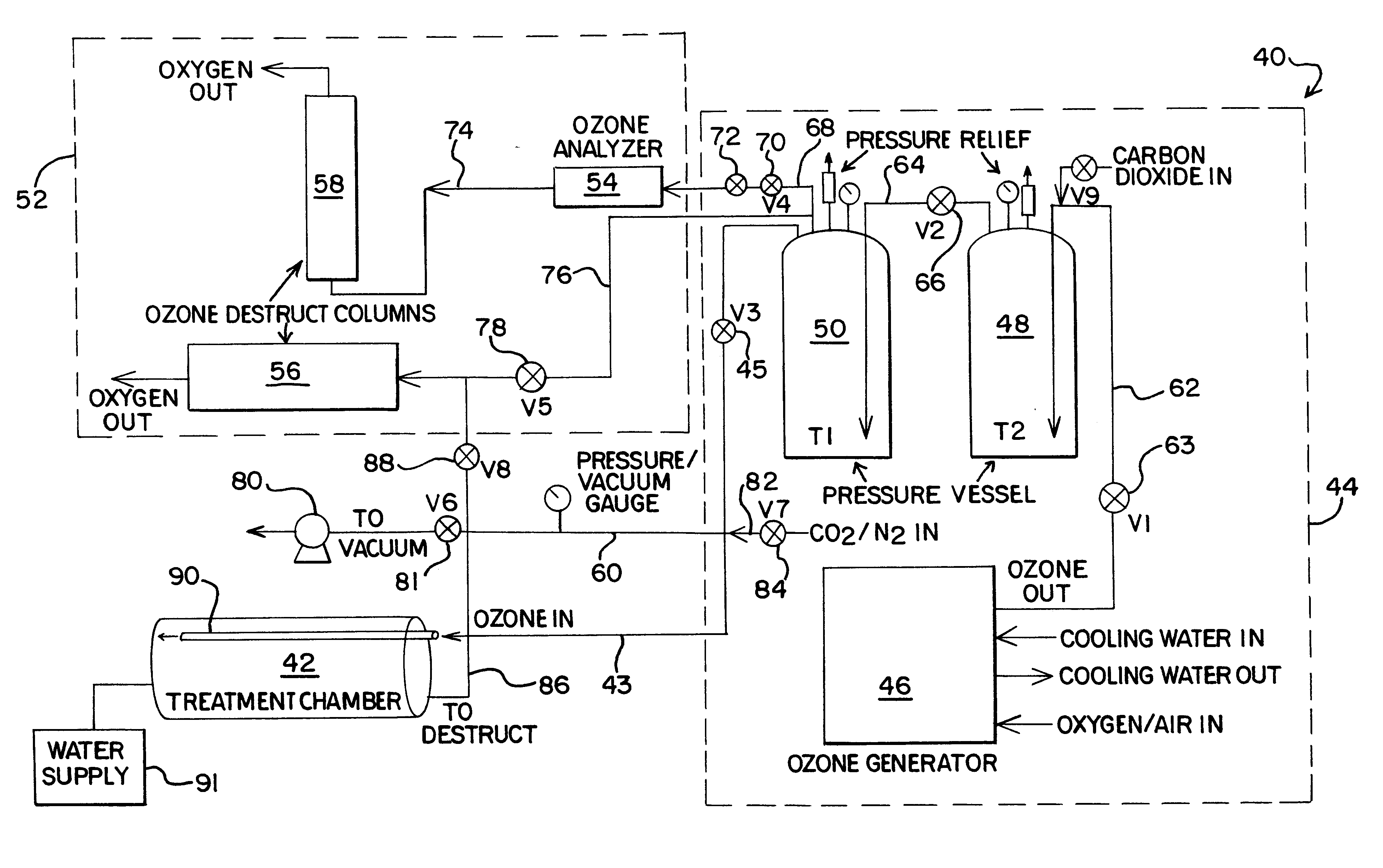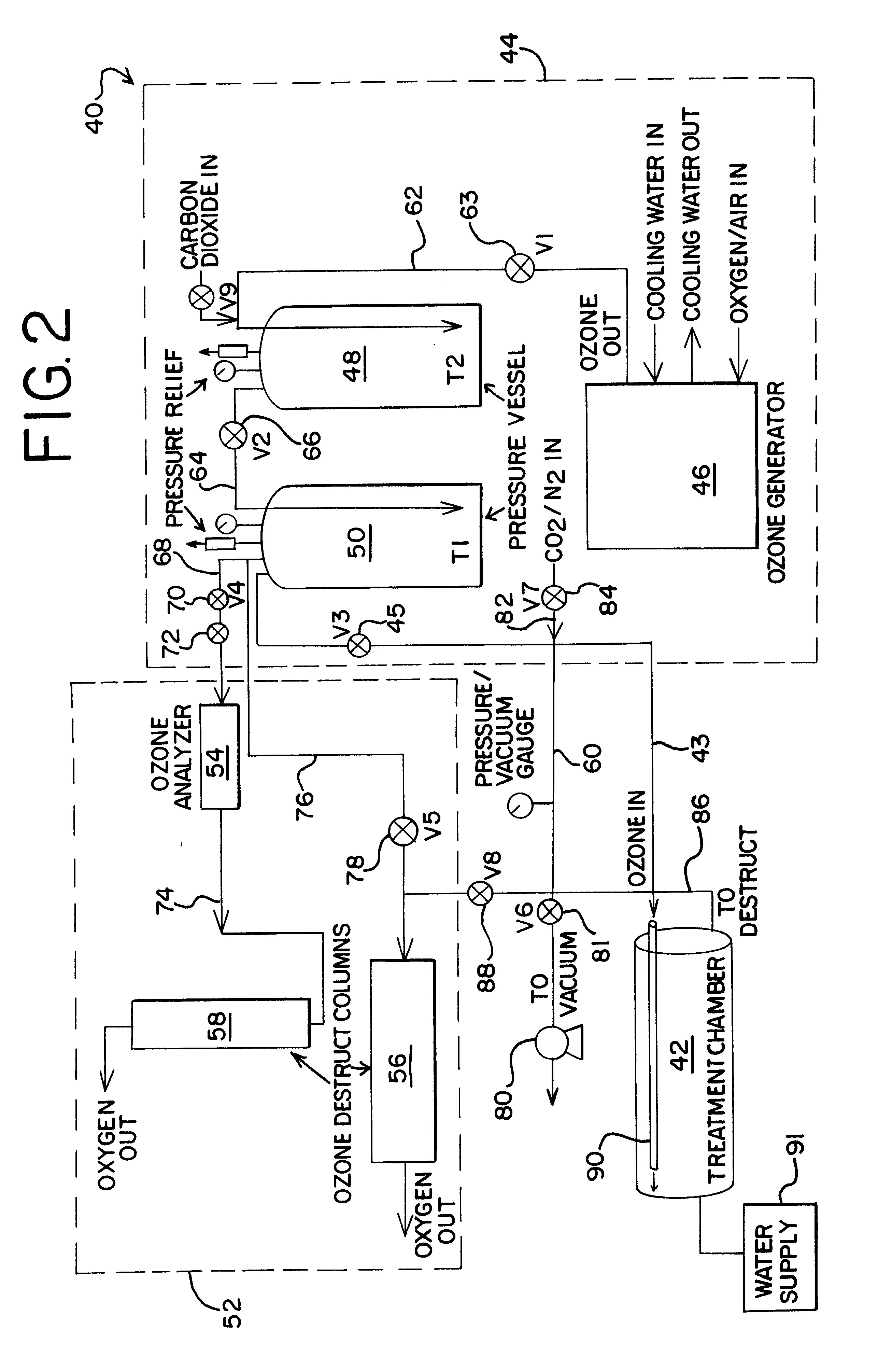Food disinfection using ozone
a technology of ozone and food, applied in the direction of milk preservation, liquid displacement, separation process, etc., can solve the problems of significant economic loss to food processors, food spoilage, microbial outgrowth, etc., and achieve the effect of reducing the bacterial coun
- Summary
- Abstract
- Description
- Claims
- Application Information
AI Technical Summary
Problems solved by technology
Method used
Image
Examples
example i
Several experiments were carried out to evaluate the efficacy of the gaseous ozone process with moisture on the selected food borne pathogen, i.e., Salmonella enteritidis and to assess the optimal ozone processing parameters on other food borne pathogens (i.e., L. monocytogenes, E. coli O157:H7, and generic E. coli) and spoilage microorganisms (i.e., lactic acid bacteria and natural meat isolate).
I. Inoculum Preparation
Since spot inoculation represents the most likely contamination pattern in nature, spot inoculation was used to inoculate the chicken coupons used in the experiments described herein.
A. Generic E. coli
Each strain of a three-strain mixture of generic Escherichia Coli (all beef isolates, obtained from University of Georgia) was maintained in tryptic soy broth (TSB) (Difco Laboratories, Detroit, Mich.) and stored at about 4.degree. C. between subcultures. To activate cultures prior to use, loop transfers (1% inocula) were made for two consecutive days in TSB and incubate...
example ii
FIG. 7 illustrates in bar chart form comparative testing with and without ozone in removing bacteria from chicken breasts. In Tests 1 and 2, the chicken breasts were contacted with ozone gas for a period of 3 minutes, while in Tests 3 and 4, the chicken breasts were contacted with ozone for a period of 6 minutes. In Test 1, a 73% reduction with ozone is seen, while in Test 2, a 48% reduction is seen. Test 3 showed a 40% reduction, while Test 4 showed a 70% reduction in bacterial count. It may thus be seen that a bacterial count reduction of at least 40% is obtainable with as little as 6 minutes time contacted with ozonated gas.
FIG. 8 illustrates in bar chart form 7 other tests performed in accordance with the present invention. Tests 1, 2, 3, and 4, exemplified in FIG. 8 resemble the tests carried out as explained previously for FIG. 2. Test 1 of FIG. 8 showed a 93% reduction, Test 2 showed an 83% reduction, Test 3 showed an 88% reduction, and Test 4 showed an 83% reduction in bacte...
PUM
| Property | Measurement | Unit |
|---|---|---|
| pressure | aaaaa | aaaaa |
| temperature | aaaaa | aaaaa |
| temperature | aaaaa | aaaaa |
Abstract
Description
Claims
Application Information
 Login to View More
Login to View More - R&D
- Intellectual Property
- Life Sciences
- Materials
- Tech Scout
- Unparalleled Data Quality
- Higher Quality Content
- 60% Fewer Hallucinations
Browse by: Latest US Patents, China's latest patents, Technical Efficacy Thesaurus, Application Domain, Technology Topic, Popular Technical Reports.
© 2025 PatSnap. All rights reserved.Legal|Privacy policy|Modern Slavery Act Transparency Statement|Sitemap|About US| Contact US: help@patsnap.com



